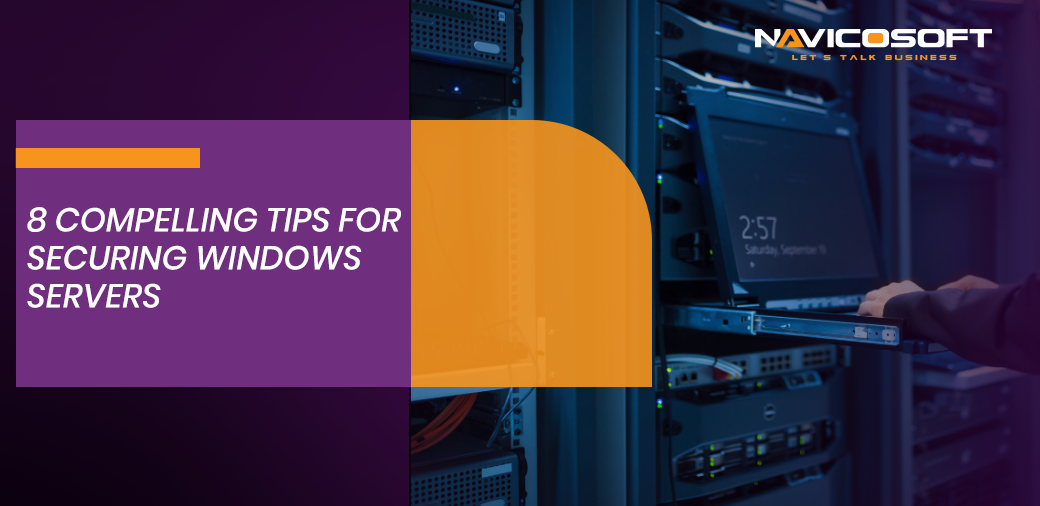Hosting services with real-time fast performance?

8 Compelling Tips for Securing Windows Servers
8 Compelling Tips for Securing Windows Servers
Windows Server is one of the most commonly used operating systems for operating the servers. Due to the nature of the operation, which involves businesses, Windows Server security is significant for enterprise data. Securing Windows servers is, therefore, an essential part. However, Windows Server has some of the security features in place by default. Nevertheless, you can do a lot more to make sure that the Windows server has an adequate defense against possible threats.
Here are a few important tips for securing Windows Servers.

Keeping the Server Up To Date
While it may look very evident that most servers installed with Windows Server images do not have the latest security and performance updates. Moreover, installing modern security patches is vital for securing Windows servers from all kinds of malicious attacks.
If you have a new Windows server or have received credentials to a previous one, make sure that you download and install the modern updates available on your computer. Therefore you can comply features which are updated for some time, but you need to install the latest security updates as it becomes available.
Install Indispensable OS Components with Windows Server Core
All the Windows Server 2012 and above use an operating system that is in its core mode. The Windows Server Code Mode involves negligible installation choice that plays a major role in installing Windows Server without the GUI.
By installing Windows Server Core, you can get many advantages. The most evident is the performance benefit. You can use the hardware to increase performance through OS components that are not used. Therefore it can result in less RAM and CPU necessities, which can give a better uptime. Along with the performance benefits, the security benefits are even more vital. A system with fewer tools is hard to attack than hacking an entire GUI-based operating system.
Protect the Admin Account
You get a default user account which is named as Administrator. Hence most of the attacks are directed at this account. Therefore in order to protect the account, you will have to rename it to something else. Otherwise, all you can do is disable the local administrator account and create the latest admin account after that.
Once the local admin account gets disabled, you can check if there is any local guest account that is available. Since local guest accounts are not very secure, you can get them out of the way wherever you feel a need to do so. A good password policy encourages consistent password changes. You can use difficult and lengthy passwords using characters, numbers, and special characters to help you secure the account against attacks.
Secure Remote Desktop (RDP)
If you are using RDP (Remote Desktop Protocol), ensure that it does not open to the internet. In order to stop unauthorized access, you can change the default port. After that, you can restrict the RDP access to a particular IP address only. In this way, you can decide who can get access and use RDP since it is active by default for all server users.
Moreover, you can use various other security features for securing Windows servers in RDP. It includes using a robust password with two-factor authentication. Moreover, you can keep the software updated and restricting access through advanced settings.
NTP Configuration
It is significant that you configure your server and sync time with NTP (Network Time Synchronization) servers. It is indispensable since even a few minutes difference can disturb numerous functions, such as Windows login.
Organizations using network devices for internal clocks specifically depend on Public Internet Time Server for synchronization. Moreover, servers based on domain members have time synced with a domain controller. Hence, a stand-alone server will need an NTP for an external source in order to avoid a replay attack. Hence it is essential for securing Windows Servers.
Configure Windows Firewall and Antivirus
Windows Server comes with an in-built firewall as well as an antivirus tool. Windows Firewall can decrease their chances of attack and provide good protection against cyber attacks on servers that do not have hardware firewalls. It simply limits the traffic to essential pathways. Therefore Cloud-based firewall or hardware-based provides more protection and reduces the load on your server.
Configure Log Monitoring and Disable Unnecessary Network Ports
You can disable any protocols or services which are not essential for the Windows Server and components. You can operate a port scan by checking the network services that are present on the internet. Checking login attempts is beneficial since it prevents interruption and interferences for all kinds of attacks.
Find secure and cheap windows hosting plans whether you need them for personal or business use. Moreover, you can approach smarter and reliable website development options and the best and cheap windows hosting plans. Make sure that your windows hosting provider fulfills all your windows hosting requirements.
Searching for security features and the best and cheap windows hosting ensures that the servers are fast and reliable. Moreover, make sure that they provide you 24/7 support to resolve all your issues and concerns. They should provide you more than 99% uptime.
Windows Server Hardening Can Successfully Reduce the Danger of Cyber-Attacks!
When considering Windows Server security, it is always beneficial to prioritize things by reviewing the system for all kinds of security risks. You can start off by installing the new updates in order to protect the admin account. Moreover, you can also use Windows Server Core mode to allow drive encryption through BitLocker.













